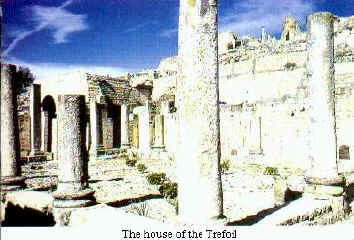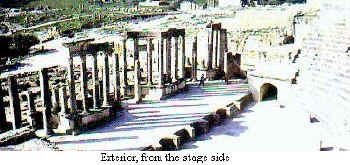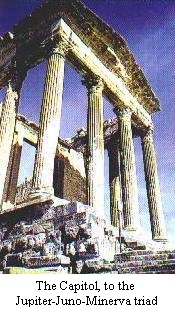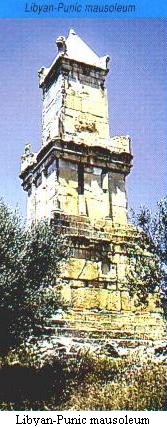 
 


|
|
- THUGGA
- A Numidian city, mentioned in the 4th centry B.C. by Diodorus the Sicilian as
Tocai, tukka was from the 2nd to 1st century B.C. one of the
residences of the Massyle Kings (MASSINISSA, MICIPSA,JUGURTHA)
- In Roman
times the municipal land was split into two parts; the Numidian city, and a pagus (rural
area) under the authority of carthage, Whole again, thugga was a municipium in 205 and
honorary colonia in 261. With some 5.000 residents, thugga had a municipal bourgeoisie
which endowed her with a number of rich monuments.
- The monuments are incredibly well preserved, allowing us to imagine the infrastructure
this little Proconsular town possessed:
- 12 pagan temples, 3transformed into churches in the 4th C, 3 baths, numerous
tanks and fountains, 1 nymphaeum, 1 aqueduct, 1 market, 2 theaters,1 circus, several
necropolises and mausoleums.
- After its 2nd C prosperity, thugga slowly lost its glory, though it still
enjoyed brief periods of revival in the 3rd, the 4th and 6th
centuries (Byzantine fortress) Though it was never deserted, archaeological research
required the removal of its residents to a new Dougga lying below classical thugga.
- THE LIBYAN-PUNIC HERITAGE
- The mausoleum dates from the middle of the 2nd century B.C It held the
sepulture of a numidian king.
- 21 metres high, it has 3 superposed tiers, the top crowned by a pyramidical roof,
formerly flanked by 4 harpies.
- From the ground up, each tier is separted from the next by steps and decorated with
lonic columns the 2nd tier is decorated with horsemen, the 3rd with
basrelief quadrigas.
- RELIGIOUS LIFE
- Built in 166-7, the Capitol consists of a 13x14 m cella, which housed a 6,5 m. marble
statue of Jupiter and two statues, of Juno and Minerva, preceded by a portico ( 6 fluted
Corinthian columns, 4 of them across the front) leading to a monumental flight of steps
with a right angle turn. In front of the Capitol is an esplanade linking the 'Compass of
the winds' square to the forum (39x24m) enclosed by Corinthian portico.
|